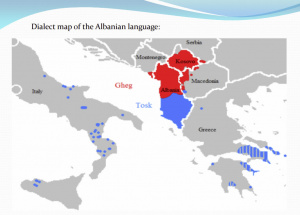Difference between revisions of "Language/Tosk-albanian/Grammar/Definite-Articles"
m (Quick edit) |
m (Quick edit) |
||
| Line 1: | Line 1: | ||
<span pgnav> | |||
{| class="wikitable pg_template_nav" | |||
|[[Language/Tosk-albanian/Grammar/Verbs-and-Present-Tense|◀️ Verbs and Present Tense — Previous Lesson]] | |||
|[[Language/Tosk-albanian/Grammar/Personal-Pronouns|Next Lesson — Personal Pronouns ▶️]] | |||
|} | |||
</span> | |||
{{Tosk-albanian-Page-Top}} | {{Tosk-albanian-Page-Top}} | ||
| Line 99: | Line 106: | ||
{{Tosk-albanian-Page-Bottom}} | {{Tosk-albanian-Page-Bottom}} | ||
<span links></span> | <span links></span> | ||
<span pgnav> | |||
{| class="wikitable pg_template_nav" | |||
|[[Language/Tosk-albanian/Grammar/Verbs-and-Present-Tense|◀️ Verbs and Present Tense — Previous Lesson]] | |||
|[[Language/Tosk-albanian/Grammar/Personal-Pronouns|Next Lesson — Personal Pronouns ▶️]] | |||
|} | |||
</span> | |||
Revision as of 19:00, 29 March 2023
| ◀️ Verbs and Present Tense — Previous Lesson | Next Lesson — Personal Pronouns ▶️ |
As a beginner in learning Tosk Albanian, it is important to understand the basics of the language. In this lesson, we will focus on definite articles.
Definite articles are extremely important in Albanian as they are used to identify specific objects or people with precision. In English, 'the' is the definite article we use, and similarly, Albanian has two forms of definite articles: 'i' and 'e'. The usage of 'i' or 'e' depends on the gender of the word they are describing.
Consider exploring these related pages after completing this lesson: Question Words & Nouns and Gender.
Gender in Tosk Albanian
In Tosk Albanian, there are two genders: masculine and feminine. Typically, masculine words describe males or objects that are considered masculine, while feminine words describe females or objects that are considered feminine.
For example:
- Masculine: "burrë" (man), "druri" (tree)
- Feminine: "grua" (woman), "lule" (flower)
Knowing the gender of a word is crucial in determining which definite article to use.
Definite Articles in Tosk Albanian
Definite articles refer to a specific noun or group of nouns. In Tosk Albanian, there are two definite articles: 'i' and 'e'. The form to be used depends on the gender of the word or the person it describes.
Masculine Gender
When using the definite article for masculine words, we use 'i' followed by the word's ending. It is important to note that if the word ends in a consonant, an 'i' is added before the ending.
For example:
- "burr-i" (the man)
- "vëllai" (the brother) - becomes "vëllai-i" (the brother)
|- | "libër" || li-bër || the book |- | "kafshë" || kaf-shë || the animal
Feminine Gender
For feminine words, 'e' is used in combination with the word's ending. If the word ends in a consonant, an 'e' is added after the consonant.
For example:
- "gru-a" (the woman)
- "lulja" (the flower) - becomes "lulja-e" (the flower)
|- | "dyer" || dyrë || the door |- | "kutia" || ku-ti-a || the box
Plural Nouns
When using definite articles for plural nouns, 'i' and 'e' are replaced by 'të' respectively for masculine and feminine genders.
For example:
- Masculine: "burra-t" (the men)
- Feminine: "vajza-t" (the girls)
|- | "muret" || mu-ret || the walls |- | "shtëpi" || shtë-pi || the houses
Conclusion
In conclusion, definite articles are an essential part of Tosk Albanian grammar, and it is vital to learn how to use them correctly. Remember to identify the gender of the noun you want to modify and use the correct form of the definite article. Practice and repetition are the keys to mastering this fundamental concept.
I hope this lesson was helpful in understanding the basics of definite articles in Tosk Albanian. Keep practicing to improve your skills and vocabulary!
Congratulations on finishing this lesson! Explore these related pages to keep learning: Negation & Adjectives.
Other Lessons
- Questions
- Future Tense
- Give your Opinion
- To Be and To Have
- Adjectives and Nouns Agreement
- Adverbs of Manner
- How to Use Have
- Negation
- 0 to A1 Course
- Nouns
| ◀️ Verbs and Present Tense — Previous Lesson | Next Lesson — Personal Pronouns ▶️ |
